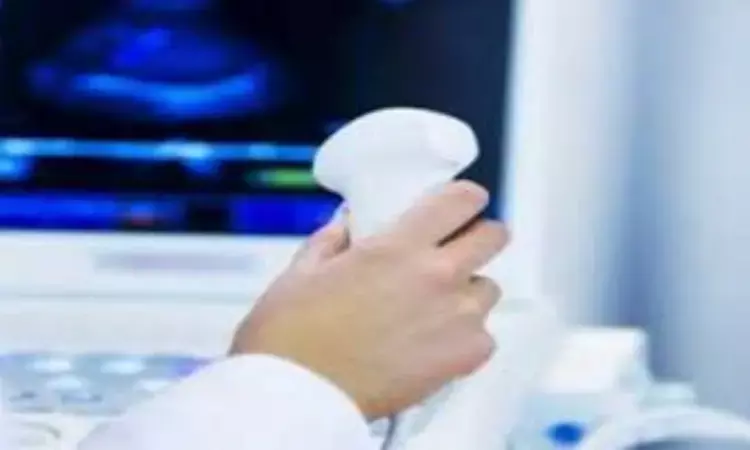- Home
- Medical news & Guidelines
- Anesthesiology
- Cardiology and CTVS
- Critical Care
- Dentistry
- Dermatology
- Diabetes and Endocrinology
- ENT
- Gastroenterology
- Medicine
- Nephrology
- Neurology
- Obstretics-Gynaecology
- Oncology
- Ophthalmology
- Orthopaedics
- Pediatrics-Neonatology
- Psychiatry
- Pulmonology
- Radiology
- Surgery
- Urology
- Laboratory Medicine
- Diet
- Nursing
- Paramedical
- Physiotherapy
- Health news
- Fact Check
- Bone Health Fact Check
- Brain Health Fact Check
- Cancer Related Fact Check
- Child Care Fact Check
- Dental and oral health fact check
- Diabetes and metabolic health fact check
- Diet and Nutrition Fact Check
- Eye and ENT Care Fact Check
- Fitness fact check
- Gut health fact check
- Heart health fact check
- Kidney health fact check
- Medical education fact check
- Men's health fact check
- Respiratory fact check
- Skin and hair care fact check
- Vaccine and Immunization fact check
- Women's health fact check
- AYUSH
- State News
- Andaman and Nicobar Islands
- Andhra Pradesh
- Arunachal Pradesh
- Assam
- Bihar
- Chandigarh
- Chattisgarh
- Dadra and Nagar Haveli
- Daman and Diu
- Delhi
- Goa
- Gujarat
- Haryana
- Himachal Pradesh
- Jammu & Kashmir
- Jharkhand
- Karnataka
- Kerala
- Ladakh
- Lakshadweep
- Madhya Pradesh
- Maharashtra
- Manipur
- Meghalaya
- Mizoram
- Nagaland
- Odisha
- Puducherry
- Punjab
- Rajasthan
- Sikkim
- Tamil Nadu
- Telangana
- Tripura
- Uttar Pradesh
- Uttrakhand
- West Bengal
- Medical Education
- Industry
Standing scrotal Ultrasound effective way for diagnosing Varicoceles, finds study

Nahid Punjani and team conducted a study, where they found out Standing scrotal ultrasonography (SUS) detects more males with varicocele who would have gone undetected with supine scrotal ultrasonography alone.
The findings of this study was published in The Journal Of Urology on 1st October, 2021. The purpose of this study was to compare the clinical results of standing versus supine scrotal ultrasonography (SUS) for varicocele evaluation.
Researchers examined males diagnosed with varicocele between 2008 and 2020 who had documented SUS with both supine and standing evaluations, with and without Valsalva. Clinical results (semen parameters, TUNEL, and serum testosterone [T]) following microsurgical varicocelectomy were compared between men who had varicoceles identified by standing SUS (vein size >2.5 mm, vein size >3.0 mm, or reversal of flow) and those who would have been overlooked with supine SUS alone.
Varicocelectomy was performed on 349 males in total (right: 5 [1.4 % ]; left: 118 [33.8 % ]; bilateral: 226 [64.8 % ]). For vein size >2.5 mm, there was 56 men (16.1 %) on the right and 31 men (8.9 %) on the left, for vein size >3.0 mm, there was 64 men (18.3 %) on the right and 56 men (16.1 %) on the left, and for flow reversal, there was 36 (14.0 %) on the right and 40 (15.4 %) on the left. Only Testosterone showed substantial benefits on the left for individuals with a circumference greater than 2.5 mm. Significant differences were seen for sperm motility on the right, and TUNEL and T on the left, for those measuring more than 3.0 mm. Significant changes in sperm concentration, morphology, and volume on the right and TUNEL on the left were seen for flow reversal.
In conclusion, the efficiency of SUS is clearly demonstrated in assessment of varicoceles when compared to other traditional methods and clinicians and doctors are encouraged to opt for SUS in future testicular diagnosis and varicoceles. Furthermore, urologists should inform patients that the grade and side of the varicocele may have an impact on the predicted prognosis.
Reference:
Punjani, N., Wald, G., Al-Hussein Alawamlh, O., Dudley, V., & Goldstein, M. (2021). Standing Ultrasound Adds Clinical Utility for the Diagnosis of Varicoceles. Journal of Urology, 206(4), 1001–1008. https://doi.org/10.1097/ju.0000000000001877
Medical Dialogues consists of a team of passionate medical/scientific writers, led by doctors and healthcare researchers. Our team efforts to bring you updated and timely news about the important happenings of the medical and healthcare sector. Our editorial team can be reached at editorial@medicaldialogues.in.
Dr Kamal Kant Kohli-MBBS, DTCD- a chest specialist with more than 30 years of practice and a flair for writing clinical articles, Dr Kamal Kant Kohli joined Medical Dialogues as a Chief Editor of Medical News. Besides writing articles, as an editor, he proofreads and verifies all the medical content published on Medical Dialogues including those coming from journals, studies,medical conferences,guidelines etc. Email: drkohli@medicaldialogues.in. Contact no. 011-43720751


